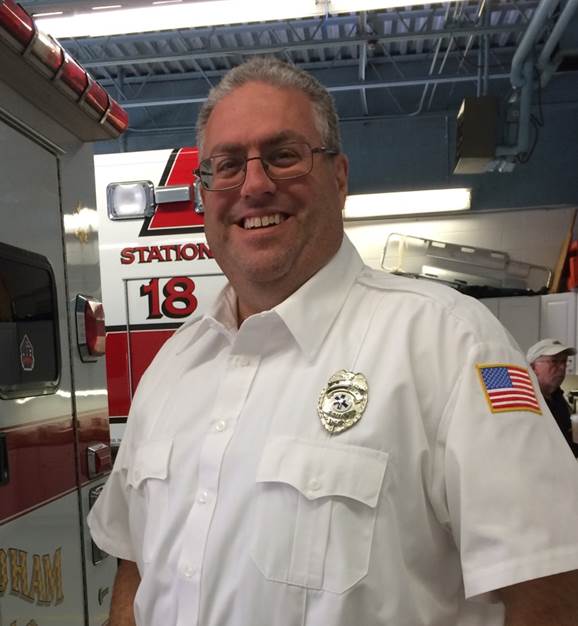|
With the first set of EMT written and practical tests behind us (Ashley, our Cadet member, and myself both scored very well...thanks to all who offered their well wishes!), our classwork moves on to a more focused set of lectures on medical emergencies, and their associated care and treatment options. While we are told not to diagnose underlying causes of illness, in practice, EMTs play a very key role in uncovering critical signs and symptoms of those underlying medical issues through our history-taking activities (the aforementioned "million questions"), which we provide to medics and hospital staff as part of our transfer of patient care. The questions also guide us in developing an index of suspicion for what may be happening with our patient, allowing us to be more aware of the risks for cardiac, respiratory or neurological issues that may develop while we are in transport. Classwork this week focused on the various causes of respiratory distress. If you love to read a good detective story, this set of coursework is for you. The textbook almost reads like a good mystery novel, filled with similar signs and symptoms for many different potential causes of dyspnea (or shortness of breath). And only by combining the practical lung sound skills we're learning to listen for, with other vital signs (including pulse rate and blood pressure), key medical history, and signs and symptoms from our observations and the patients own behaviors and expressed issues, can we reach a clear index of suspicion on key underlying possibilities to be aware of. Respiratory distress and respiratory failure causes range from partial and complete blockages that can be resolved by coughing or using the Heimlich maneuver; to infectious and chronic diseases including croup, pneumonia, COPD, and Congestive Heart Failure (CHF), to environmental and toxicological causes like Carbon Monoxide (CO) poisoning.
EMTs need to be able to recognize signs and symptoms for a multitude of possible causes, as well as potential side effects for our treatment options and risk factors for other impacts. We've learned a new mnemonic (PASTE) to help us assess patients with dyspnea, investigating the Progression of dyspnea, Associated chest pain, Sputum, Talking tiredness, and Exercise tolerance of the patient to further our understanding of root causes for expressed symptoms. Of course, a solid understanding of the anatomy and physiology of breathing and respiration is required, which was covered earlier in class and reviewed here again. Did you know that your need to breathe is really a function of an elevated level of Carbon Dioxide (CO2) in your blood, and not actually a lack of Oxygen (O2) itself in your lungs or your body? And that you breath not to take O2 in to your lungs, but rather to push CO2 out of your body? However, patients with COPD can actually be a higher risk for respiratory failure from being provided high-flow Oxygen, because their body has made adjustments to use the level of O2 in their blood as a trigger for initiating an exhalation (and therefore relieving the body of elevated CO2 levels), instead of the normal triggers of an elevated carbon dioxide (CO2) level. This shift to a hypoxic drive (hypoxic meaning 'low Oxygen'), is one of the underlying risk factors that we're being taught to understand and be cognizant of, because standard practice is to provide Oxygen to all patients with impaired breathing. In this particular case, we need to recognize that we may actually need to decrease the flow of supplemental O2 we provide in order to allow the body to properly respirate the CO2 out of the lungs on its own. As a result, transporting a COPD or CHF patient in a supine position (on their back) can make their lung tissues fill even further with fluid, compromising their ability to breath and absorb Oxygen even further. Now that I've taken a breather to write this, I'm off to study a bit more. Because once we add the heart in to the equation, things can get critical very quickly....
0 Comments
Your comment will be posted after it is approved.
Leave a Reply. |
AuthorJon Alperin, one of our MFAS volunteers, shares his journey to becoming an NJ certified EMT. from the Start
Here is Jon's journey, presented in time order:
Archives
June 2016
Categories
All
|


 RSS Feed
RSS Feed
